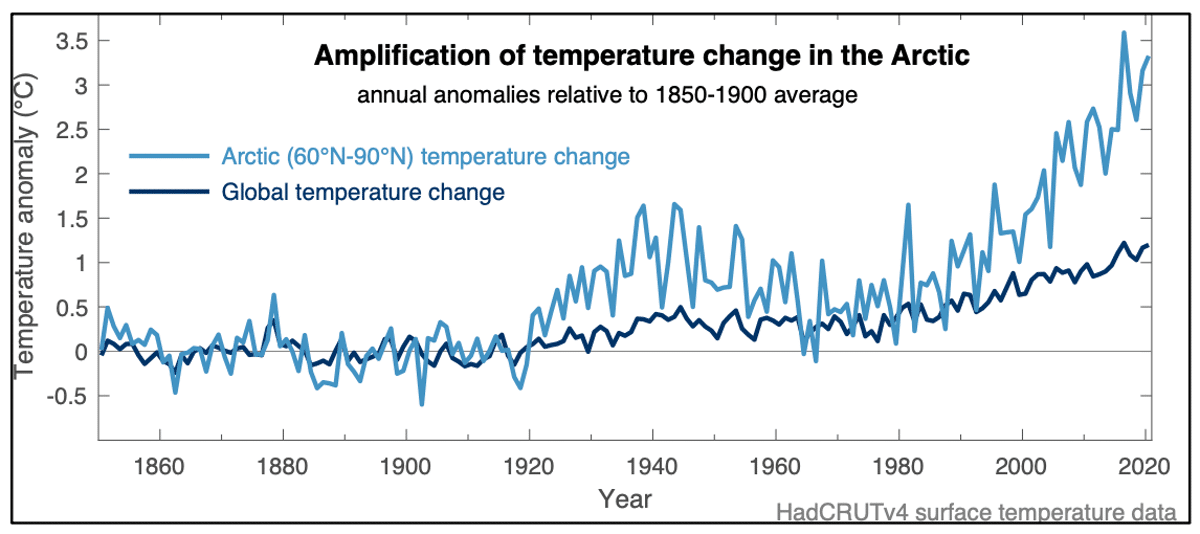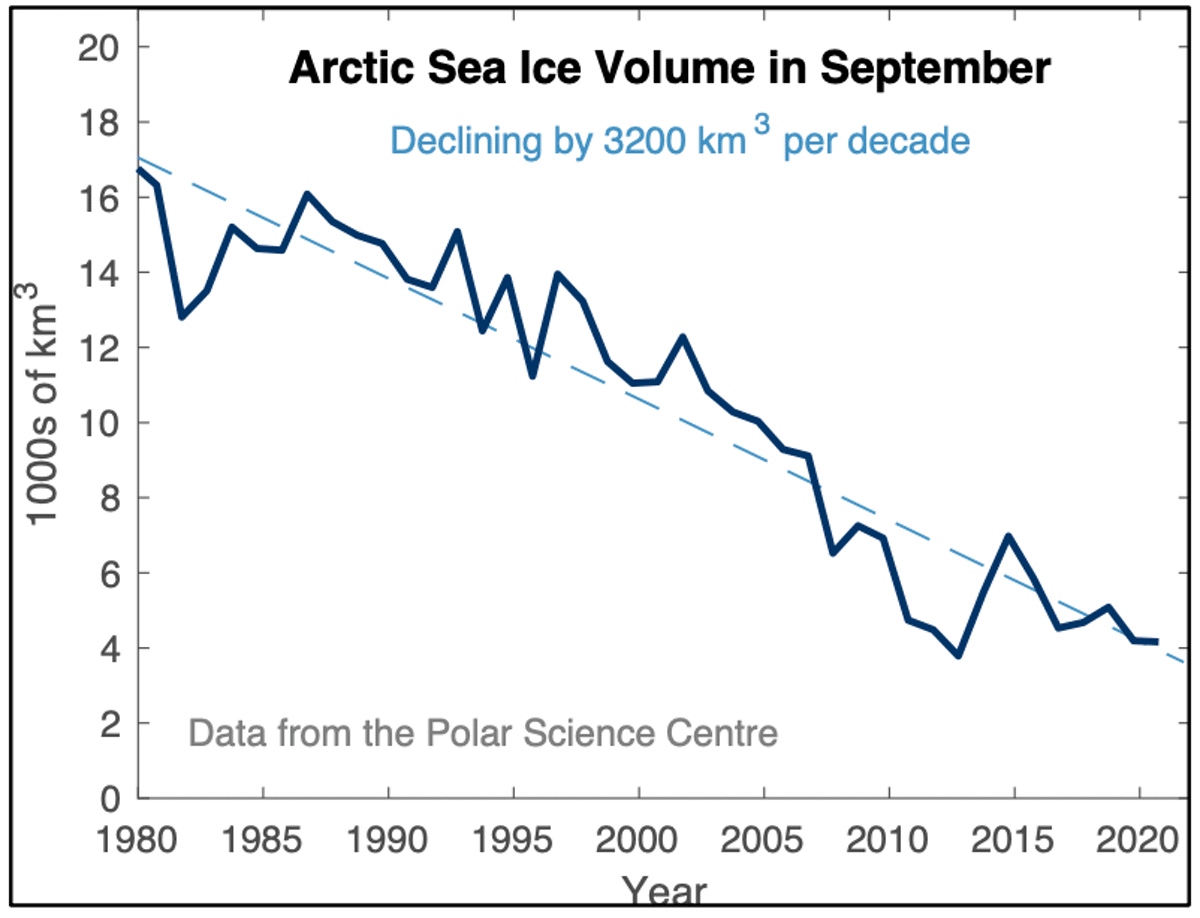Removing CO2 and other greenhouse gases from the atmosphere, with the goal of returning to 350ppm by 2100, involves the creation of new carbon sinks: long-term burial sites from which the gas cannot escape. Among other things, the researchers propose huge projects to restore the forests, the poles and the oceans
By: David King, Founder and Chair of the Center for Climate Change, University of Cambridge and Jane Lichtenstein, Advocate, Center for Climate Change at the University of Cambridge. Translation: Avi Blizovsky

"Nowhere is safe." As the Intergovernmental Panel on Climate Change (IPCC) warned in a recent report that climate change and its consequences are here to stay. Is there still an opportunity to mitigate some of the dangers and return to a place of relative security for humanity?
The challenge of surviving the next 50 years is now seen as a global existential crisis; We urgently need to work together, just to secure a short-term future for human civilization. Global weather patterns are becoming more and more extreme: Greece is burning; floods in southern England; The weather in Texas was the coldest ever, while California and Australia are suffering from apocalyptic wildfires. All of these violent and record-breaking events are a direct result of rapid warming in the Arctic, which is happening faster than the rest of the world. The warm Arctic Ocean activates new ocean and air currents that change the weather for everyone.
The only way to reverse some of these catastrophic patterns, and to restore a kind of stability in the climate and weather systems, is to "correct the climate" - a strategy we call "reduction, removal, correction" - which requires us to move very quickly to zero net global emissions; Massive and active removal of greenhouse gases from the atmosphere. In the first case, to correct the wild weather patterns, we need to slow down the rate of glacier melting, stabilize the sea level and break the feedback loops that continuously accelerate global warming.
Reducing emissions will not be enough
About 70% of the world's economies have net commitments to zero emissions over varying timelines, but this has come too late to restore climate stability.
The IPCC has called for accelerated progress on this track, but whatever happens, current atmospheric greenhouse gas emission rates imply a global warming of 1°C by 2030 and over 2°C above pre-industrial levels by the end of the century – a devastating outcome. In particular, the melting of the glaciers and thawing of frozen ground is considered inevitable even if we manage to reduce CO2 emissions soon. Sea level rise will continue for hundreds of years as a result. In every region of the world, climate events will become more severe and more frequent, whether floods, heat waves, coastal erosion or fires.
There are certainly important steps that can still reduce the scale of this destruction, including faster and deeper emissions reductions. However, these actions are not enough to prevent the worst. Together there is real evidence that massive removal of greenhouse gases from the atmosphere and solutions such as repairing the Earth's poles and glaciers can help humanity find a way to survive this crisis.
removal of greenhouse gases
Removing CO2 and equivalent greenhouse gases from the atmosphere, with the aim of returning to 350ppm (parts per million) by the year 2100, involves the creation of new CO2 carbon absorbing areas - long-term burial sites from which the gas cannot escape. Such a CO2 absorbing area is built by planting forests, restoring mangrove trees, swamps and preserving peatlands.
Very large projects, such as loess restoration in China, can gradually help remove CO2, in addition to the benefits of expanding food production, improving biodiversity and stabilizing the weather.
Habitat restoration can also make economic sense. In the Philippines, mangrove is the focus of cost-benefit analysis. A mangrove captures four times more carbon than the same area in the rainforest. Mangrove forests provide many ecosystem services and protect against flooding, provide socio-economic benefits and significantly reduce the cost of dealing with extreme weather events.
Large new carbon sinks must be created wherever possible including in the oceans. Interventions that mimic safe natural processes are a practical starting point. Promoting ocean grazing to restore ocean diversity and fish and whale stocks to levels last seen 300 years ago is one such possibility. This solution will also enable new sustainable food sources for humans, as well as contribute to climate ecosystem services and act as a carbon sink.
For example, dust rich in iron from deserts or volcanic eruptions can be spread on the bottom of the deep oceans and thus it will be possible to create within a few months rich pastures in the ocean, full of fish and a variety of marine wildlife. Studies of ocean algae regeneration show the full range of real-life impacts, from increased protein sources for human consumption, to restoration of pre-industrial levels of ocean biodiversity and productivity, and extensive carbon sequestration.
Expanding the scale and number of ocean pastures can be achieved by systematically spreading iron-rich dust over target areas in oceans around the world. The approach is intuitively scalable, and could account for perhaps 30 billion tons per year of CO2 if spread over 3% of the world's deep ocean floor each year.
A large-scale carbon sink of this type is crucial to allowing the atmosphere to return to pre-industrial CO2 levels. One billion tons per year of carbon sequestration is the minimum threshold calculated by the Cambridge Climate Change Center given the magnitude of the climate crisis. While the scale of intervention is sometimes called "geo-engineering", the approach is closer to reforestation or mangrove restoration. The goal is to remove CO2 from the atmosphere by natural means, and return us to pre-industrial levels within one generation.
Earth restoration
The immediate challenge is to stabilize the planet, to achieve a management equilibrium that gives a last chance to move to renewable energy and towards a circular global economy, with new norms in urban, rural and marine management. The "correction" seeks to systematically pull the earth back from the climatic tipping points, which by definition cannot happen without direct effort and the provision of a political and social support framework.
The most urgent effort is to freeze the North Pole, hinder the acceleration of ice loss, disrupt sea level rise - and the acceleration of climate change and the violent global weather changes they cause. Arctic temperatures have risen much faster than global average temperatures, compared to pre-industrial levels. Figure 1 shows this clearly from 1850 to the present day.
The melting Arctic ice embodies a powerful feedback force in climate change. White ice reflects the sun's energy away from Earth before it warms the surface. This is known as the albedo effect. As the ice melts, the dark blue seawater absorbs increasing amounts of the sun's energy, warming increases and larger areas of ice disappear each summer, expanding the acceleration. Arctic temperatures control winds, ocean currents and weather systems around the world.
Transient Tipping Point: Sea Ice Loss Becomes Permanent and Accelerates. The Greenland ice sheet will melt in its wake, eventually raising global sea levels by more than seven meters. Total ice loss may take centuries, but, decade after decade, there will be unceasing cumulative effects. By the middle of the century the melting will be irreversible, and sea level rise alone will leave low-lying countries like Vietnam in desperate circumstances, and will certainly cause a reduction in world rice production, and many millions of climate refugees with no horizon for such countries.

The rapid Arctic temperature rise is matched by the rapid and accelerated loss of minimum (summer) sea ice volume (Figure 2), which further accelerates the temperature rise in a spiral of reinforcing feedback loops.

It is essential to bring the world back from this tipping point, and fix the North Pole as quickly as possible. Marine cloud brightening, in which floating solar pumps spray salt upward to brighten clouds and create a reflective barrier between the sun and the ocean, is known to cool ocean surfaces and is a promising way to promote Arctic summer cooling. The process mimics nature, and its scale can be changed flexibly. Studies of marine cloud clearing, its climate effects and interactions with human systems, are ongoing.
So does the promotion of ocean grazing, such solutions must be critically analyzed, but there is no longer any doubt of their critical importance.
What we do in the next five years will determine the viability of humanity's future. Even if we reduce our ambitions to "survival", while correcting a timeline of 50 years or so, the challenges are daunting. Humanity deserves more. We know what to do to be able to imagine thousands of years of human civilization ahead, thanks to those we have already passed.

6 תגובות
And not a single word about Bucher
Although there is plenty of agricultural waste that can be used as raw material and that this method is practical and will contribute to soil fertility.
1) In order for these tremendous actions to take place, there is a need for global supranational leadership to impose this effort on the states.
2) Since there is no such leadership (actually the trend today is the opposite, of disintegration into small states) the chance that we will be able to carry out these actions is very small. Even the transition to 0 emissions, despite the promises, will not happen so easily
3) What everyone can do: reduce travel (work from home); avoid unnecessary consumption; save energy
An obsession with holiday flights, sea transport of masses of goods that can be produced locally...
And if the public understands...forest fires...
Traffic jams from car manufacturers who pushed to work far away and shop far away and live outside the city and scatter children
For mixing…
Y. Nissan- Elections and the Suez Canal...30-10-2018 - Moshe Atar collided with Lauren Ankri
New from Giv'on. Shemesh in Gibeon Dom, Joshua chapter XNUMX verse XNUMX.
Crown-tiara-crown-crown...give a shoulder...replace R with a crown for P.
Are they talking about an alien? H = 8 ... F = 80. Zero is nothing, but a zero to our right makes it stronger...
Discouraging.
In another 1000 years what will be here? What will be left of us?
Piles of garbage in every corner, radiation that kills outside, polluted water, polluted soil, unbearable temperatures.
And some populations of subhumans, all million, live in hell, in caves and fight to survive. Longingly dreaming of a world that was a paradise that their ancestors lived in and destroyed.
I only hope that they will learn from our mistakes, that in the new world the message about the responsibility of the prudent towards their home will burn well.
And I hope that we will survive as a species to see it and that by our side the animals and plants will survive, at least some of them.
Hope that somehow it can be fixed and if only we stop abusing the earth for a few thousand years, it will return to normal.
But this is false hope because what we are doing is irreversible.
Yes Yes Yes ,
As someone who, together with my editor father, has been warning for many years
on the need to moderate pollutant emissions
To prevent climatic disasters I am convinced
Because indeed it is necessary to do everything to reverse the trend
Do everything to reduce emissions and absorb carbon from the atmosphere
but
The change has already happened and the disasters are already hitting all over the world,
Therefore together with the important initiatives for recession and carbon absorption
Initiatives must be implemented to protect against the disasters that will continue to strike,
Identifying, mapping and marking areas that may be damaged,
Establishing systems that will protect against harm
or intermittent evacuation of residents from risk areas,
Protection of infrastructure in risk areas,
The climate damages are already here and they will intensify
Therefore it is necessary to prepare…
Here in Israel there is an urgent need to improve the drainage systems,
change the structure of the roads and sidewalks so that they allow
water seepage instead of flowing on the surface,
Change the planning approach so that new development areas
will be set up in consideration of powerful rain storms,
prepare the water, electricity, gas, etc. transportation systems,
develop and build according to necessity and not according to megalomania,
And the hardest for us:
Prepare, teach and educate the public on rules of conduct
During the natural disasters that will surely come,
Because once again it is the duty of each and every one to do as much as he can
To prevent any contamination
But it is also important that everyone is aware of the change
that the meaning of disasters and harm on a "biblical" scale
Nonsense in tomato juice Those who do not understand that there is a landlord for his house that he bought and uses and will not let anyone who wants to enter it and make it his property then he needs to understand that even in this world there is a landlord who set rules and those who break them pay in the end it's just a matter of time